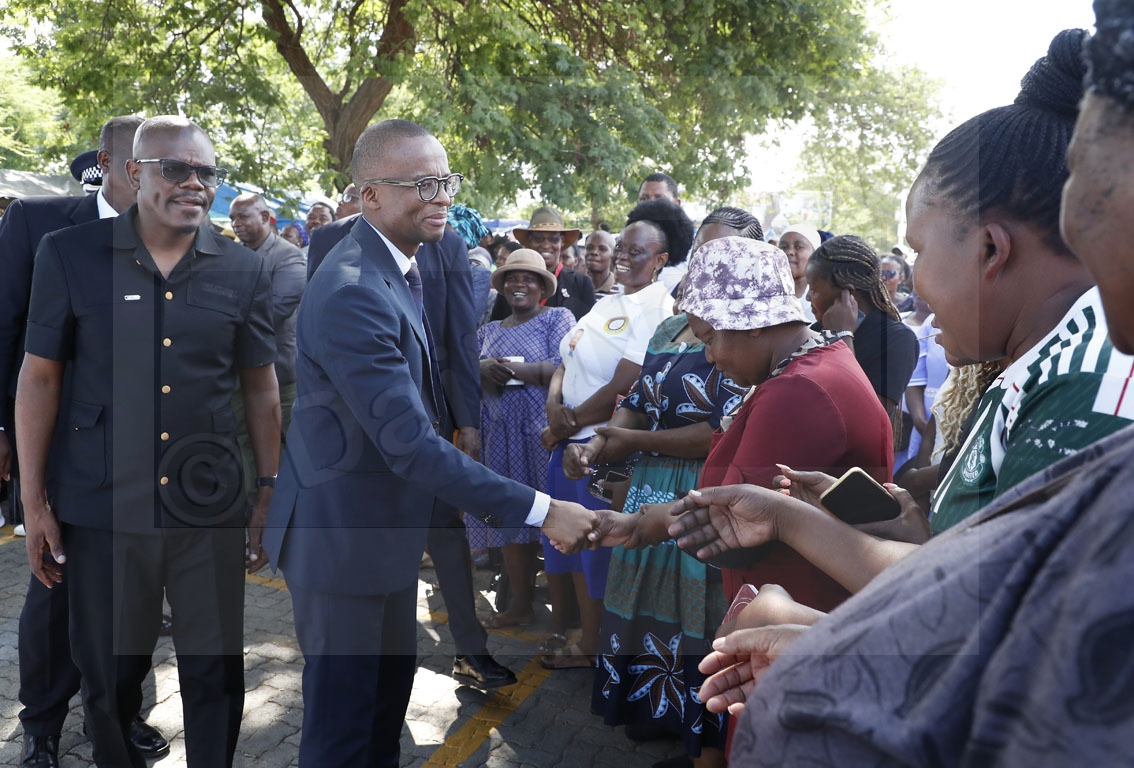2024 Year of fiscal challenges
19 Dec 2024
This has been a very difficult year as the country faced economic challenges, just when it was expected to continue to recover from the effects of COVID-19.
Early this year, the local economy was projected to register growth of 4.2 per cent during 2024, driven by recovery in the diamond sector.
In her budget speech, the then Minister of Finance, Ms Peggy Serame announced an expansionary budget of P102.28 billion, and for the first time in the history of the country, Botswana’s expenditure hit the P100 billion mark.
At the time, the economy was expected to generate P93.58 billion, with revenue from the South African Customs Union (SACU) projected to be the largest contributor, followed by mineral revenue.
The expansionary budget saw the introduction of programmes such as Chema Chema Fund, which was initially budgeted for P200 million but was later increased to P500 million to cover as many citizens as possible.
When the nation celebrated the amount of funds channeled towards developments and looked for potential job opportunities created by such projects, reality hit the ground.
As the diamond market continued with a downward trajectory due to low demand in China and USA, the International Monetary Fund (IMF) revised growth to one per cent.
Real Gross Domestic Product (GDP) declined by 0.5 per cent in the second quarter of 2024, following a contraction of 5.3 per cent in the first quarter, thus indicating the economy is in recession.
Economists use letters ‘U’, ‘V’ and ‘L’ and also ‘W’ to illustrate how the economic recovered, with ‘U’ signifying that it took long time to recover and ‘V’ as a sharp recovery. The ‘L’ shows that the economy has not recovered and ‘W’ illustrates vitality.
“The continued slowdown is mainly due to a fall in diamond production, partly offset by construction projects financed by the fiscal expansion,” reads the statement from IMF Article IV consultation with Botswana.
Diamond market has been experiencing difficulties emanating from competition from synthetics, weak demand in China, disruption of supply chains due to the Russian invasion of Ukraine and the negative impact of measures imposed by G7 countries to enforce sanctions on Russian diamonds.
Lower sales and high inventories pushed De Beers to reduce planned production, which has resulted in lower GDP growth forecasts due to projected contraction in diamond mining output.
The slump in the diamond sector hit hard on government coffers, and analysts pushed for reduction in spending, particularly development projects that did not have an immediate impact in the economy.
The country spent P8 billion per month during the second half of the year against a revenue income of P2 billion per month, according to Vice President and Minister of Finance Mr Ndaba Gaolathe, who said this was unsustainable.
Total GDP is projected to decline by 1.7 per cent this year, as compared to the 4.2 per cent that was mentioned in the budget speech.
Trade balance for September, registered a deficit of P24.8 billion as weak diamond sales resulted with a 30 per cent decline in the value of exports in the first nine months of the year.
The level of foreign exchange reserves declined to P52.8 billion in September, compared to P63.9 billion in the same month in 2023.
“Poor economic performance has had a negative effect on the fiscal sector. Preliminary data, Mr Gaolathe said, showed that as at September, total revenues and grants stood at P34.67 billion in the first half of the year, compared to an estimated collection of P46.67 billion in the original budget.
In August, the government made a decision to reduce the recurrent budget by four per cent and the development budget by 22 per cent in response to subdued revenues.
“The outturn for the first half of the financial year points to a deficit of P4.2 billion (-1.52 per cent of GDP),” the Vice President said. An overall budget deficit of P18.68 billion (-6.75 per cent of GDP) has been projected for the 2024/25 financial year, which is more than the approved threshold of 4 percent of GDP.
Public debt levels as a percentage of GDP stood at 25.5 per cent, with domestic debt accounting for 15.6 per cent and external debt accounting for the remaining 9.9 per cent. The level of debt remains within the statutory limit of 40 per cent of GDP but concerns over the increase remain as it could lead to a debt crisis in future.
Government Investment Account (GIA) has also declined. As at September, it stood at only P1.2 billion, compared to P12.6 billion in September 2023 due to high expenditures and low revenue collection.
Bank of Botswana has recently maintained a monetary policy rate at 1.9 per cent as inflation has remained within the Bank’s medium term objective range and the environment remains favourable.
Inflation reached 1.7 per cent in November, down from 3.9 per cent recorded in January. ENDS
Source : BOPA
Author : Tebagano Ntshole
Location : Molepolole
Event : Interview
Date : 19 Dec 2024




